
If you’re looking for a premium self-inflatable mattress for your next camping trip, you might want to stay here for a bit and read up on why I think the Coleman Supercomfort is one of the best camping beds on the market.
From past experience, I’ve always been very impressed with Coleman’s products, whether it’s lighting up the tent using one the US company’s original portable pressurised petrol lanterns, kipping beyond sunrise in one of its blackout tents or, in the case of this fine foam- and air-filled self-inflating mattress, snuggling down for the night, safe in the knowledge that even if the bed were somehow punctured, you wouldn't wake up with your arse on the floor.
And, as we all know, when it comes to camping, a comfortable arse is a happy arse. So, with that in mind, I shall now divulge why I think a mattress like this is one of the car camper’s best sleeping solutions for a comfortable night under the moon and stars.
Coleman Supercomfort self-inflating mattress review
Price and availability
UK campers can purchase the Coleman Supercomfort from a number of outlets, including UK Camping and Leisure (£142.99) and Jacksons of Old Arley (£139.99).
What is a self-inflating mattress?
As I explained in my Quechua vs Coleman vs Vango comparison feature, I’m not at all enamoured of standard inflatable beds. You know, those cheap Lilo-type ones made out of thin plastic with uncomfortable pitted surfaces that have a propensity to leak because a tiny field grass stem stabbed the surface while you were in the process of hyperventilating because you forgot to buy an electric air pump.
Aside from occasional punctures, the air inside a standard airbed absorbs the temperature of the ground it’s on (which is why I would always recommend an under blanket or camping cot) and this cold air easily circulates around the inner chamber of the bed so you just get colder and colder as the night wears on.
By stark comparison, a self-inflating air bed isn’t just filled with air; it’s also filled with a series of foam channels that add extra insulation while helping the bed to self-inflate as soon as you unroll it and open the air inlet valve. Extra air can then be added using your lungs or a pump.
Foam-filled mattresses are generally a lot more comfortable to sleep on and more supportive than standard models, and that makes them a great choice for anyone with a dodgy back. The fact that you can adjust the amount of air to suit your weight or preference means that they are suitable for everyone.
Also, many self-inflating mattresses are equipped with a plush, completely flat sleeping surface that feels so much better against the skin. The outer material used is generally thicker, too, and much more sturdy as a result.
However, one of the best things about self-inflating mattresses is that even in the rare event that they are punctured or have a slow leak, the foam alone will provide enough emergency cushioning so you don’t end up lying on a hard floor at 3am in the morning.
Granted, most foam-filled self inflatables are more bulky to transport than a normal air bed so they are not suitable for backpacking. But on the plus side, they help any car camper or glamper get a great night’s sleep, and are equally handy for home emergencies when you suddenly need a spare bed.
Design and features
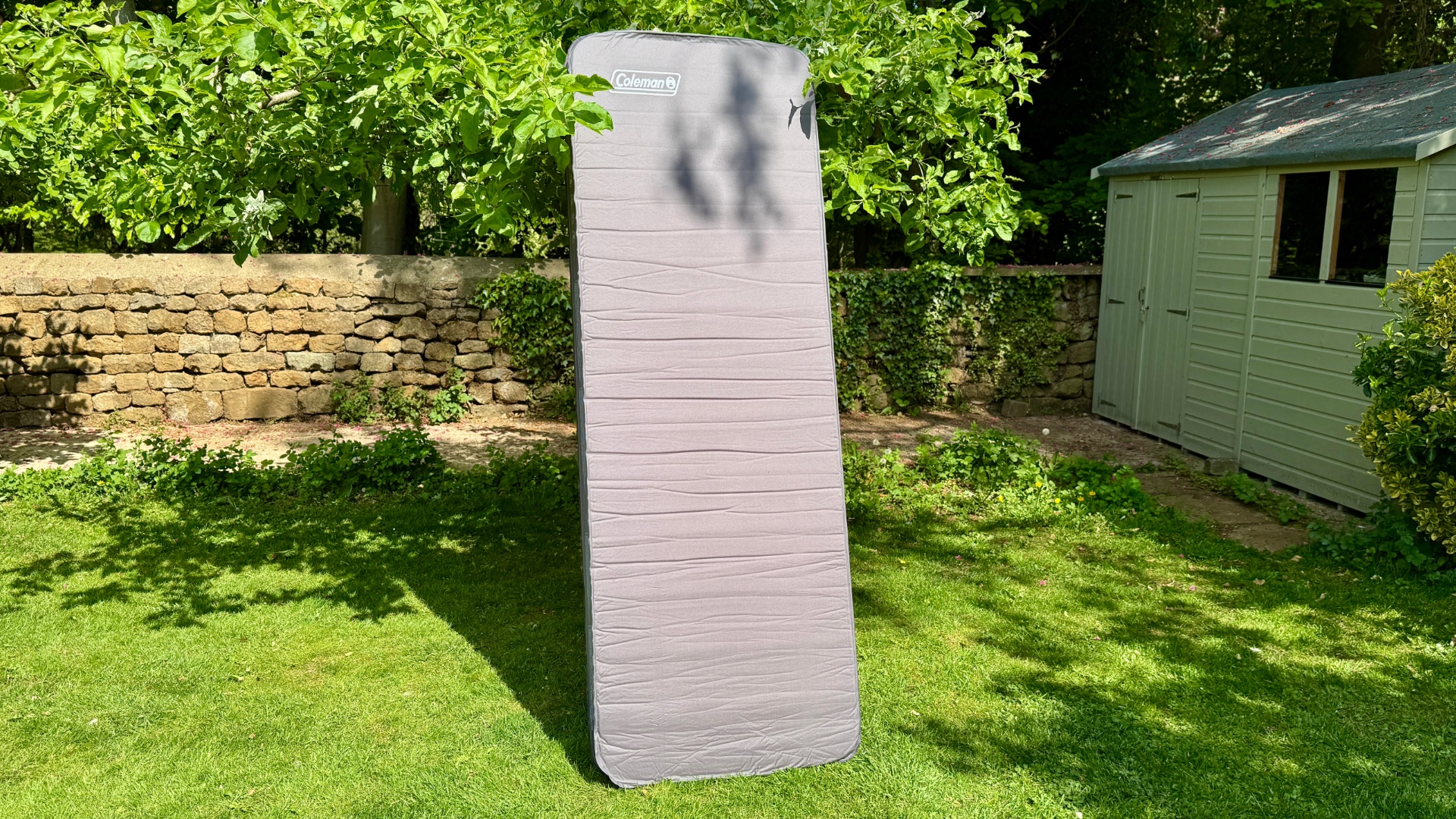
The single Coleman Supercomfort is available in two depths – the 12cm model we have here and a slimmer 7.5cm variant for those with less space in the car. At 200cm in length and 68cm in width, this model is perfectly suited for use directly on the floor and is also a perfect match for most camping cots, especially the Helinox Cot One Convertible I recently reviewed.
However, at 3.3kgs in weight and 25cm across the girth when rolled up, the 12cm model we’re dealing with here is clearly only suitable for car camping, caravanning and home use when unexpected guests arrive for a stay-over.
By the way, if you require even more width than a single, there’s a double variant available too, and this measures 128cm across. Mind, from my own experience, a double mattress for two people isn’t anywhere near as comfortable as two singles put together. Firstly, the Coleman double is about 7cm narrower than a standard double bed, which means there’s not much space for movement.
Also, while a self-inflating mattress is less bouncy than a standard air mattress, you will still feel the movements of your partner as they shift sleeping positions. So stick to singles!
Although this model’s 68cm width is 2cm shy of the Quechua UltimComfort, it makes no difference at all once you’re lying on it. However, while the sleeping surface is smooth, flat and lightly flocked, I would prefer to have seen something along the lines of the wonderfully plush fabric coating that Quechua applies to its mattresses. For this reason I would be inclined to also pack a single sheet to cover the Coleman, just to make the surface feel softer and little less camp bed-ish.
The Coleman Supercomfort’s main shell is constructed from a nylon and polyester mix that feels robust enough to fend off some sharp objects, but not all. Hence, I wouldn’t want to test its strength with a dog walking all over it lest a wayward claw puncture the surface. But then that’s the case with any bed filled with air, or water for that matter.
The Supercomfort’s inner section is filled with channels of insulating Polyester foam that do a sterling job of keeping the cold at bay. Unfortunately, Coleman doesn’t state an R-value to indicate this model’s thermal resistance, but the company does say that it is ’usable in winter and sub-zero conditions’.
To use, simply unfurl the tightly rolled mattress on the floor and unscrew the Cyclone valve cover. Now flick the valve around with your finger and the foam will start to expand as the vacuum inside is released and air is sucked in. I’d say it takes between five and eight minutes to fill to about 80%, and that can be good enough for most sleepers since the softer the mattress, the more comfortable it is.
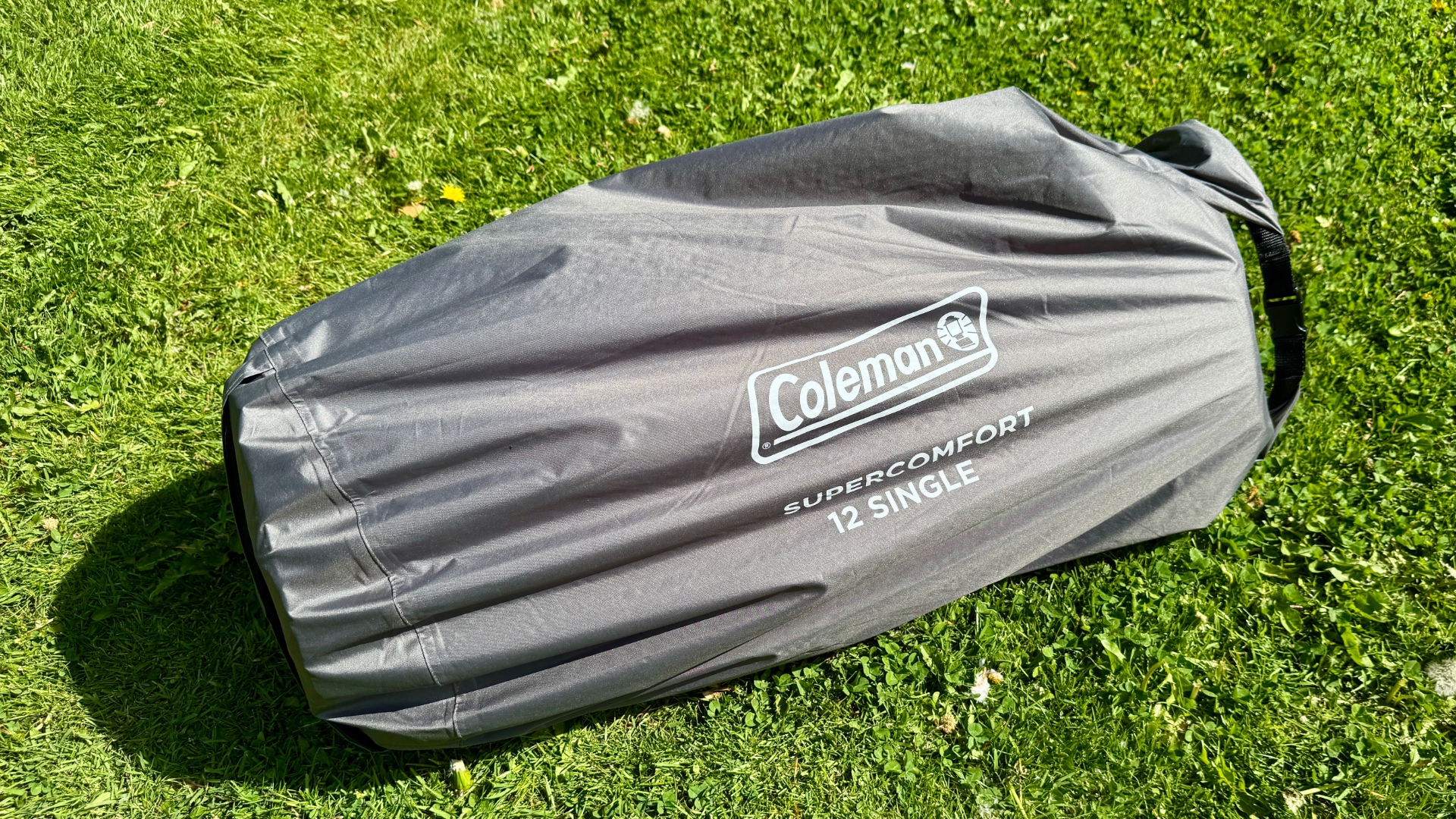
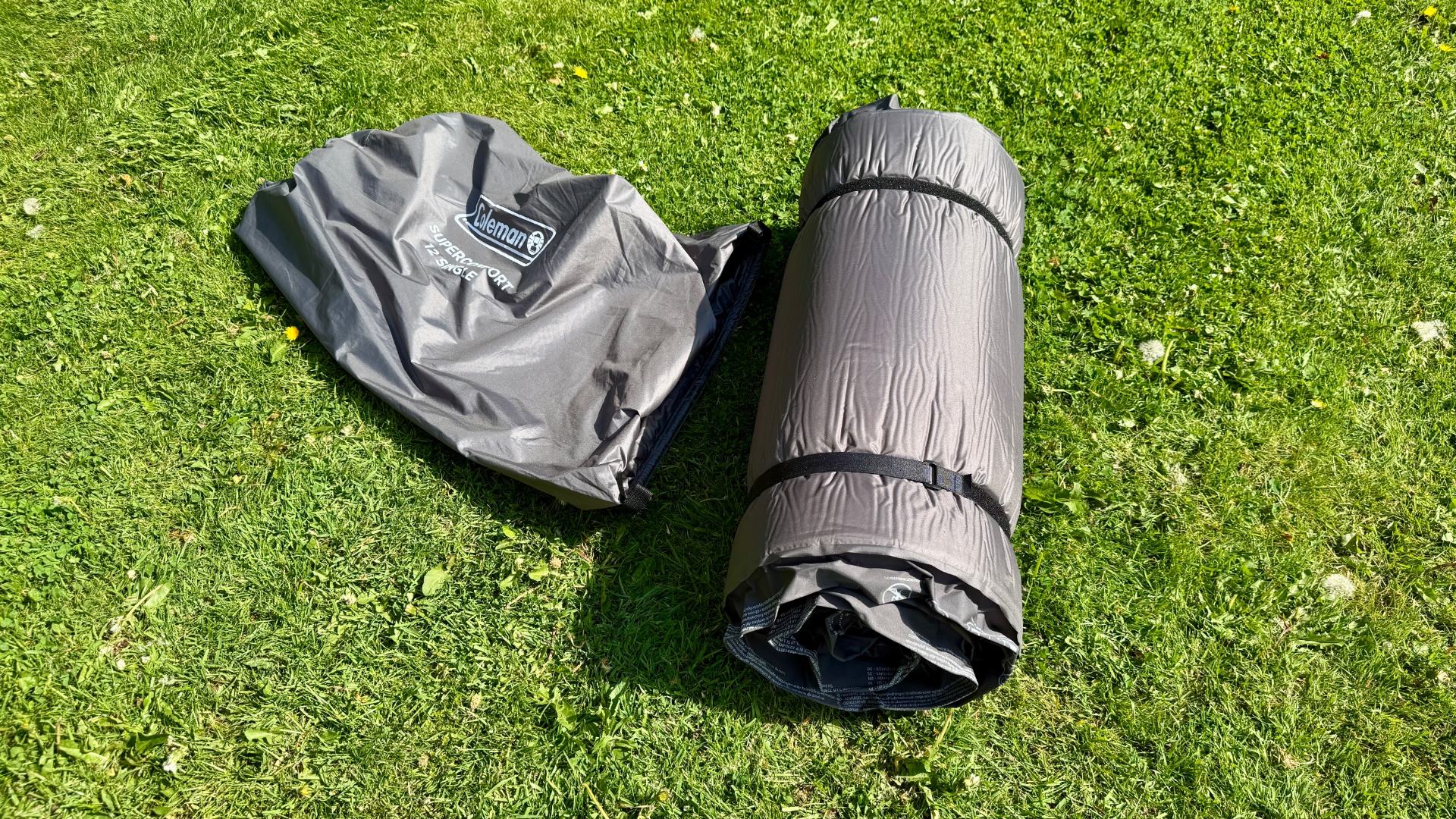
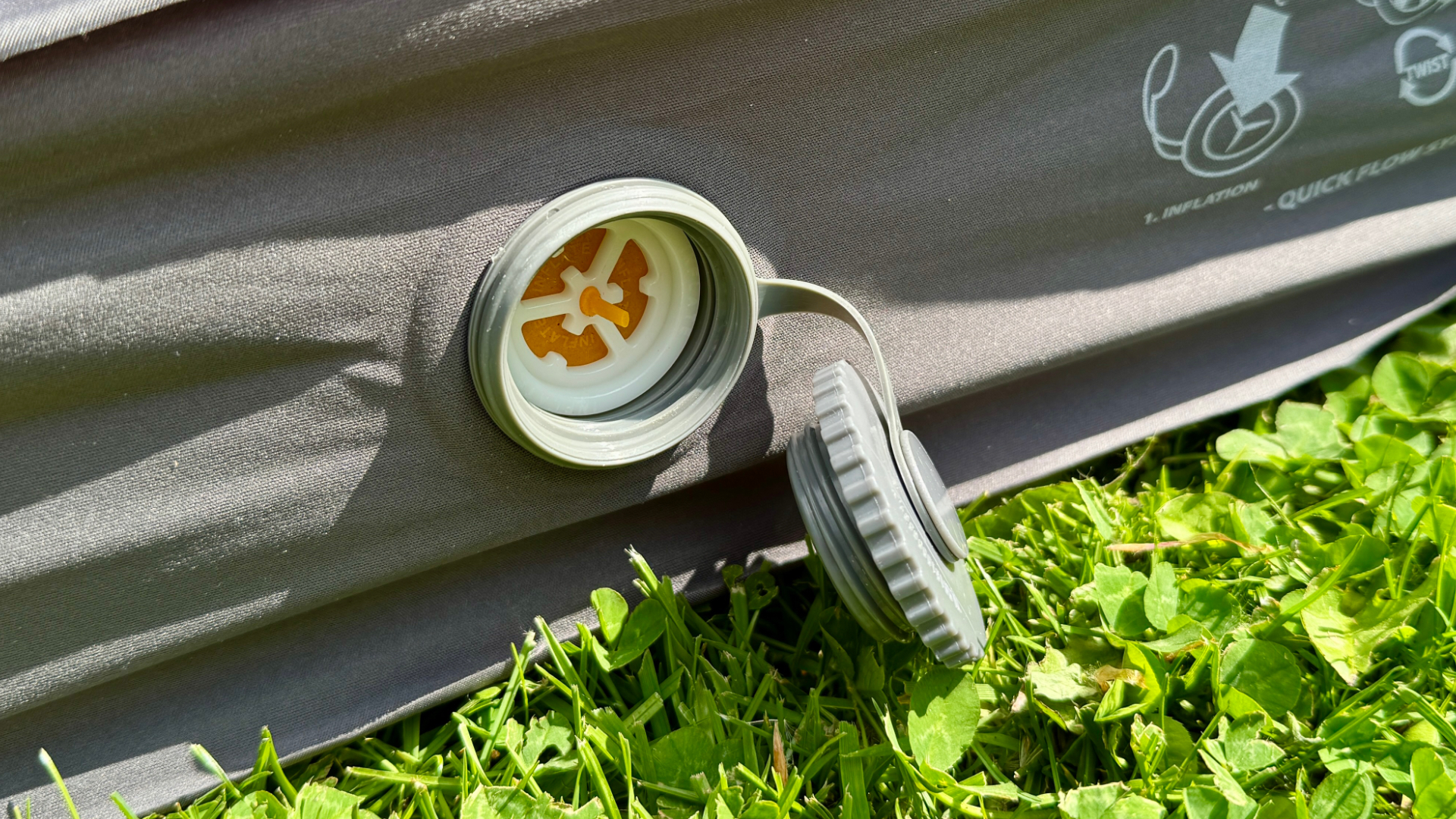
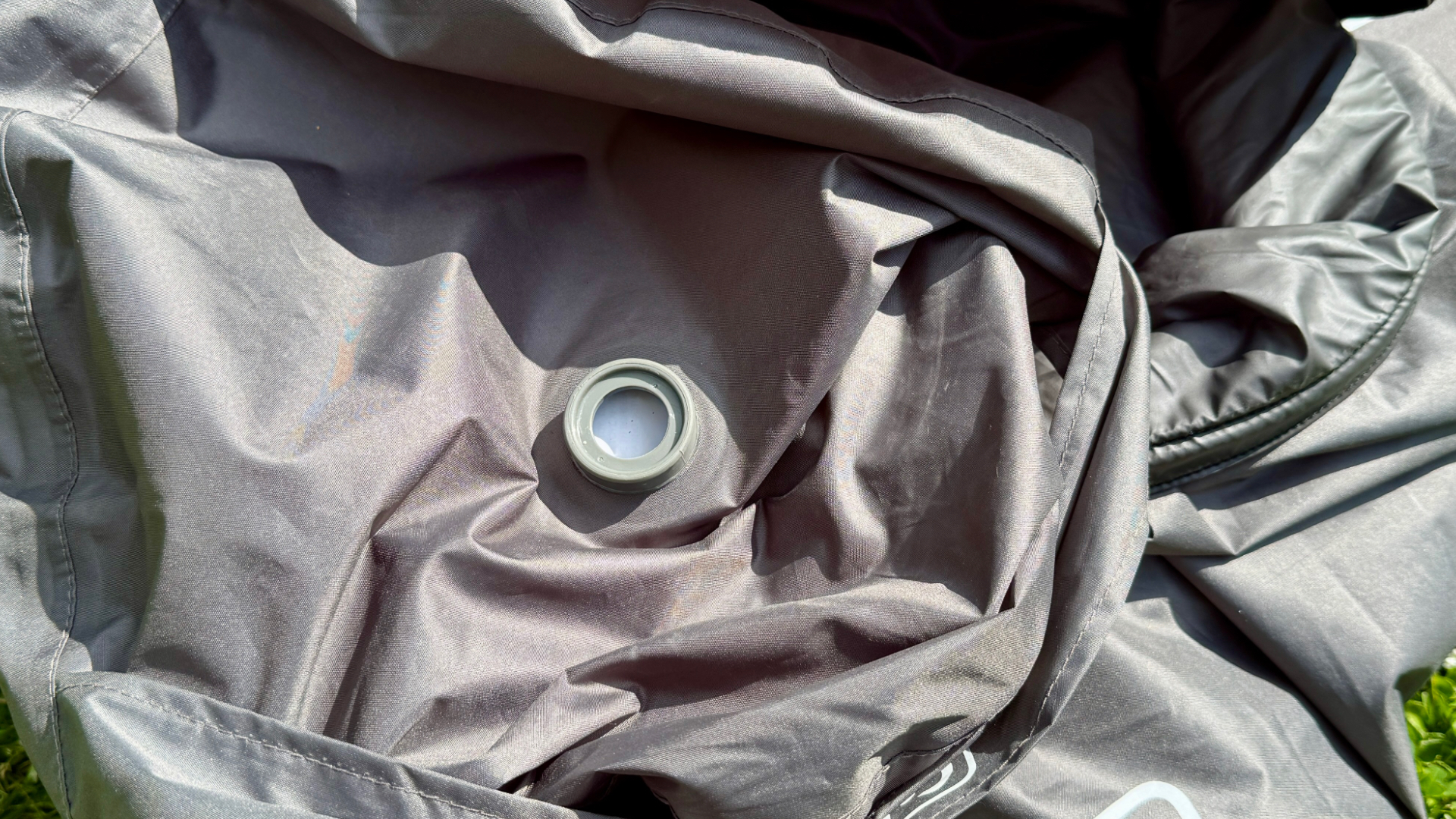
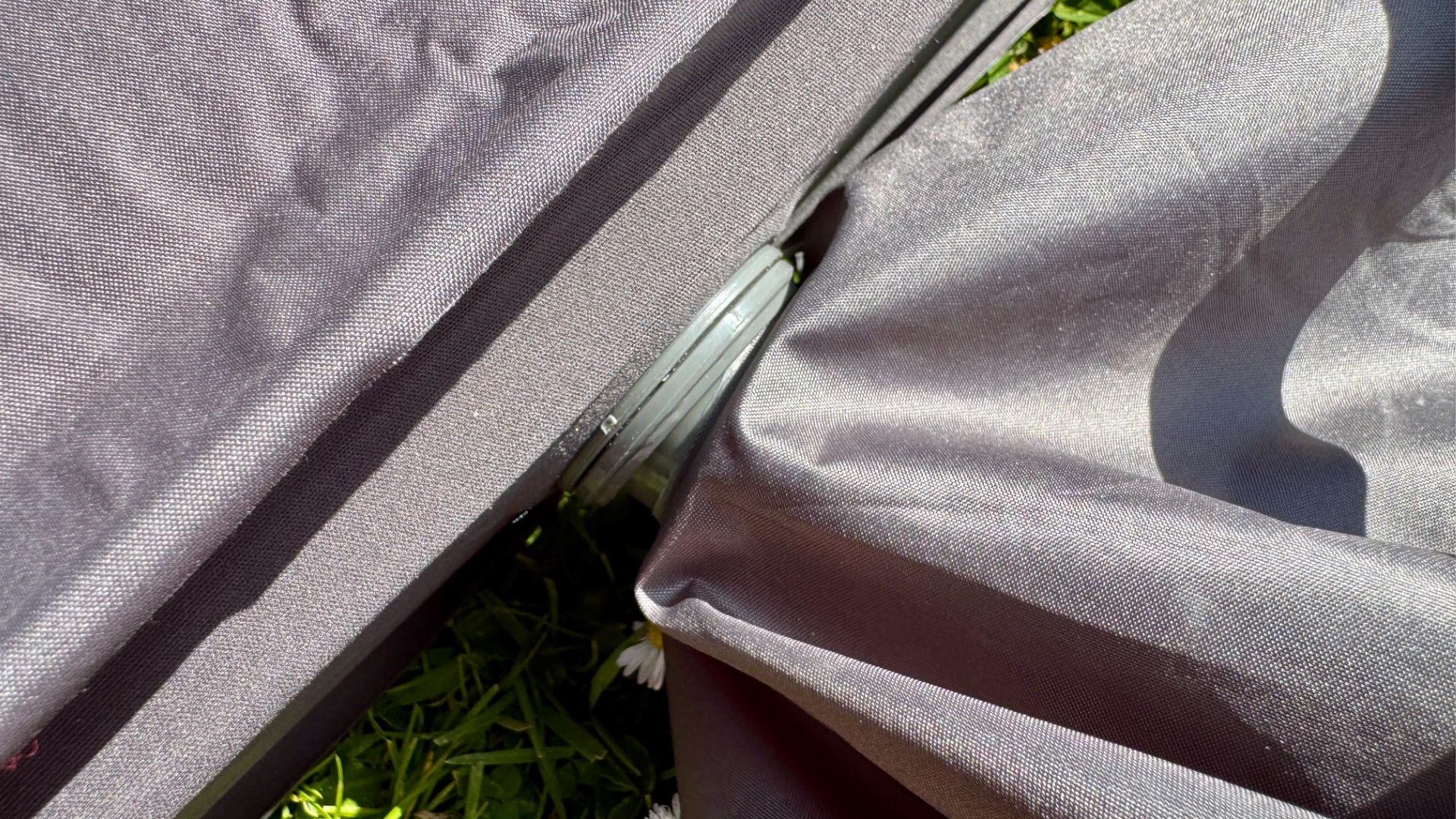
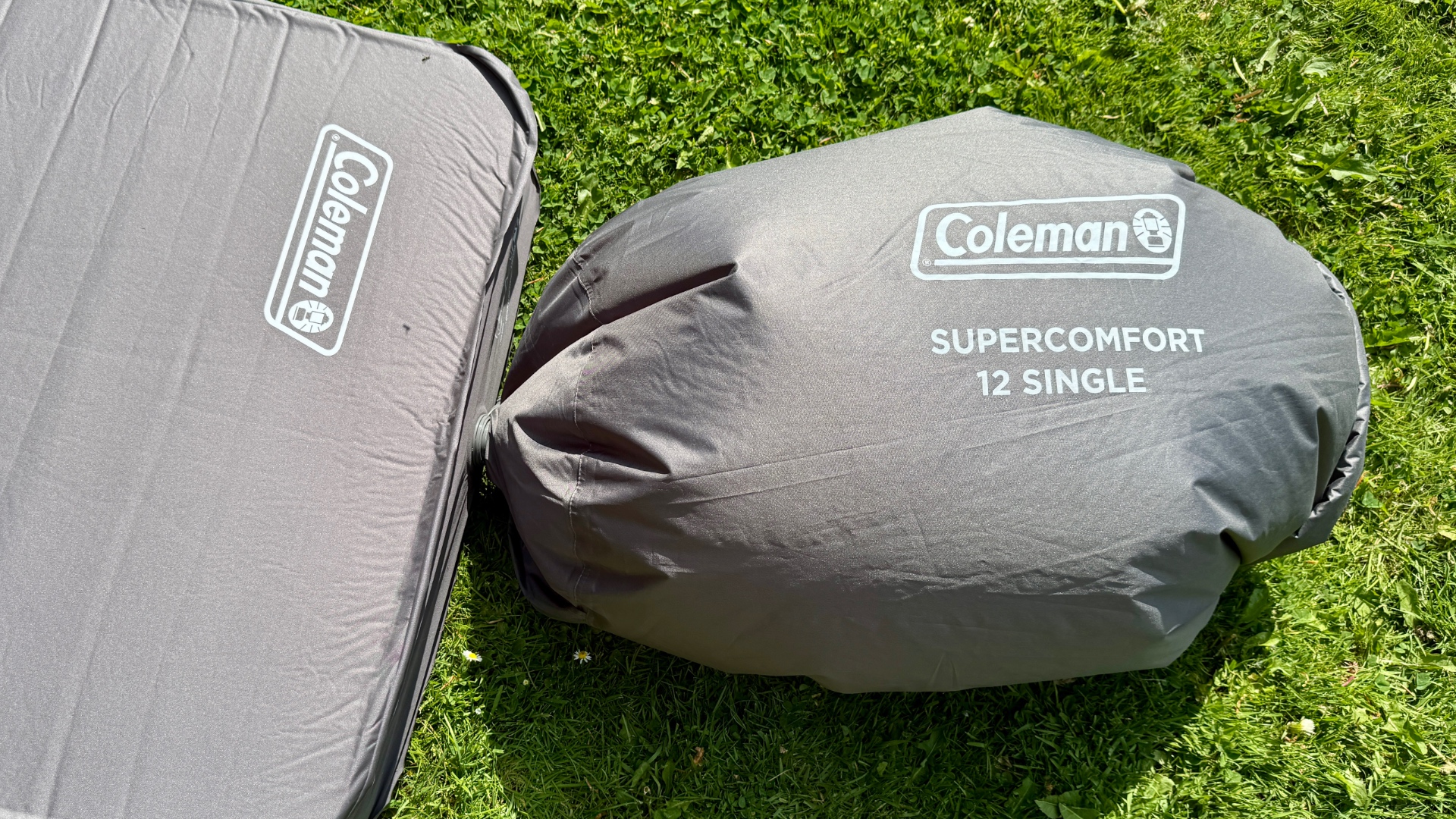

But here’s the clincher with this model: if you need to add more air to the bed, you don’t need to reach for a pump to do this, or even use your lungs. Instead, you can utilise the carrying sack the mattress comes in because it’s equipped with a circular valve connector at the opposite end of the bag’s main opening.
Just grab the open end of the bag and puff it up so it fills with air. Next, roll up the opening’s stiff but flexible hems and attach the clips. You will now have a balloon-shaped structure that you can use to inject as much extra air as you need.
I was especially pleased to discover this simple but clever inflation system because the bed’s extra-large Cyclone valve system is unlike any I’ve ever seen and not one of my three pumps’ adaptors are compatible with it. Please Coleman – and you, too, Vango – give us valves that are actually compatible with our air pump connectors.
While assembly of this bed is a cinch, rolling it up so it’s in a tight enough package for transport is anything but, mostly because the foam adds loads of resistance as you attempt to tuck it over. The first thing you need to do is push the disc in the valve the other way round so the air can escape.
After leaving the bed for about five minutes so it can naturally deflate to some degree, perform a single tight fold on the opposite end of the valve and place both knees on top. Repeat this process using hands and knee pressure until you’ve worked your way up the entire bed. You may need a drink after this arduous process and possibly a little nap.
Comfort and performance
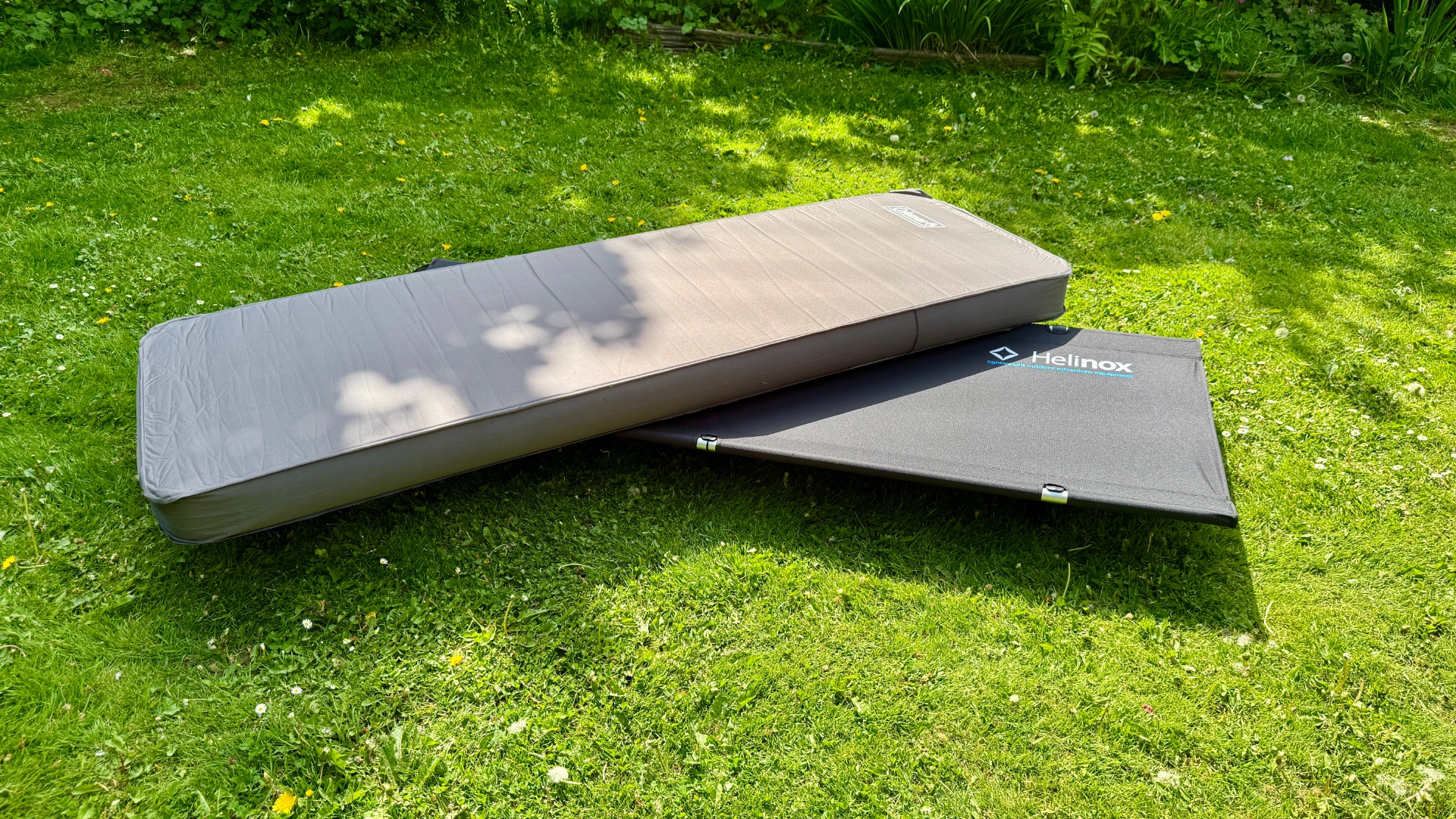
The Coleman Supercomfort’s 12cm depth provides ample support and impressive levels of comfort as long as it’s not over inflated. The reason I say this is because an airbed that has too much air in it feels overly firm and not especially comfortable.
The secret is to lie on the inflated bed and reach behind you to the valve so you can carefully release a few squirts of air at a time until you feel the mattress sag just enough to still provide good support while feeling less firm and bouncy. That’s the great thing about airbeds in general – they can be adjusted to suit all weights.
The Supercomfort’s 68cm of width is perfect for me but then my middle name is Skinny Malincks. However, I still believe this bed’s width is good enough for most large users. But if you think that 68cm is too narrow for your anatomy, perhaps opt for the double instead.
I’ve been using the Supercomfort on a Helinox One Cot Convertible, and it’s the perfect combo with just a few centimetres of overlap on either side. This blend of air bed and camping cot is far and away my favourite sleeping solution.
What’s more, should any unlikely puncture scenarios occur, I feel safe in the knowledge that the mattress’s foam alone combined with the Helinox’s springy mat will see me through the night, possibly without me even realising anything was awry.
However, I just wish that the Supercomfort’s sleeping surface was covered in the same plush fabric that Quechua has applied to its Ultim Comfort range. It’s not a bad surface by any means, but it definitely cries out for a standard bed sheet to make it feel more homely.
Verdict
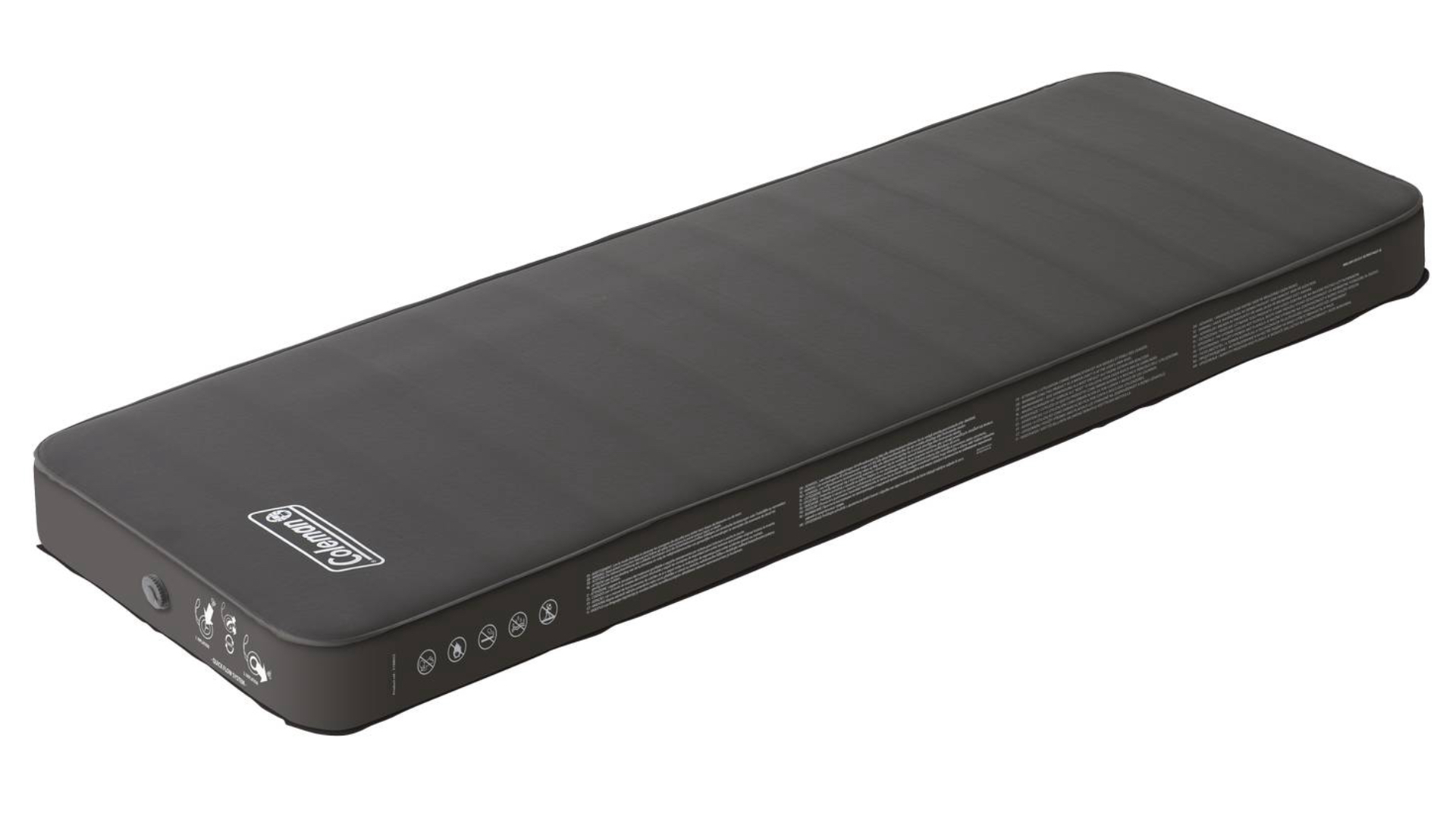
The Coleman Supercomfort is well engineered to deliver great thermal insulation and ergonomic support for outdoor sleeping environments and use at home. Its generous 12cm of height, flat dimple-free form and innovative inflation system make it a really practical solution for extended car camping trips. However, a fabric-like sleeping surface wouldn’t go amiss.







